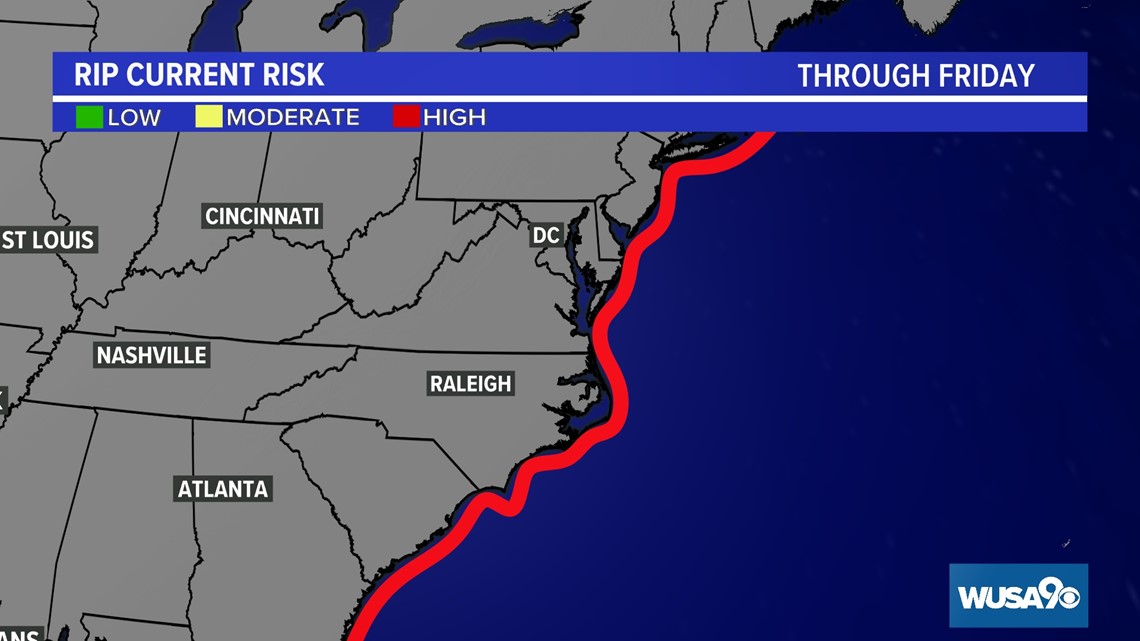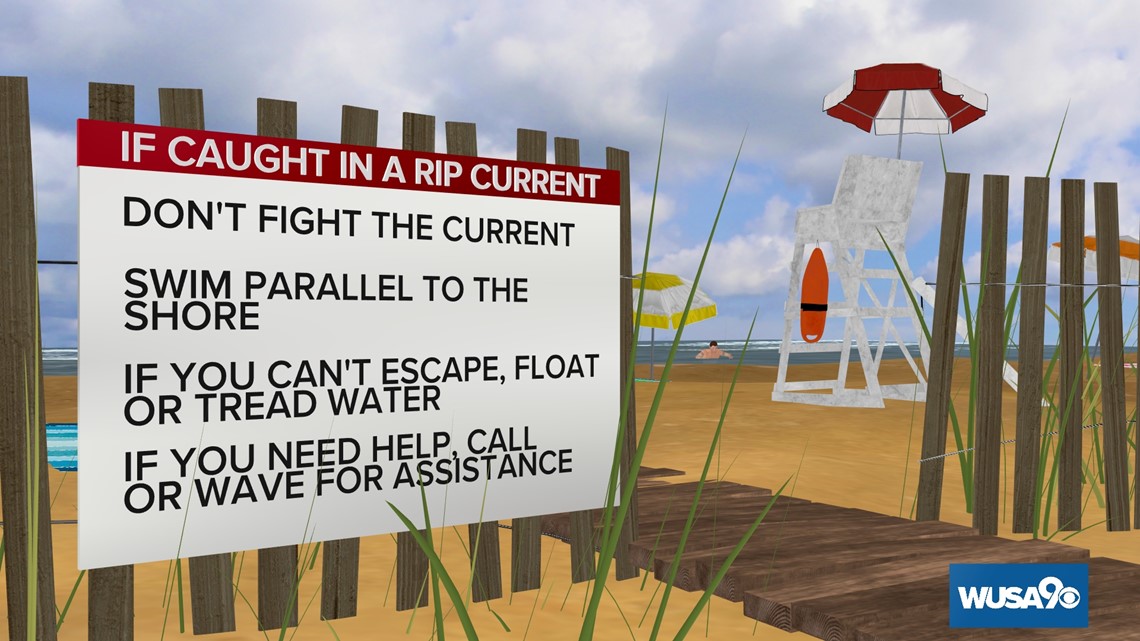WASHINGTON — If you're trying to get in a final beach trip before the unofficial end to summer, you need to be wary of water conditions at our local beaches.
Hurricane Franklin is causing rough surf all along the east coast and, according to the National Weather Service, posing a high risk for rip currents.
The threat should wane by the end of the week as Franklin moves farther out to sea, but Hurricane Idalia could also kick up high surf, depending on the track.
What is a rip current?
Rip currents are powerful, narrow currents of water moving away from the shoreline and can be extremely hazardous to even the strongest swimmers. These dangerous conditions can occur when waves travel from deep to shallow water and break near the shoreline.


Rip Current Risk Category:
- Low Risk - The risk for rip currents is low, however,
life-threatening rip currents often occur in the vicinity of groins,
jetties, reefs, and piers - Moderate Risk - Life-threatening rip currents are possible in the
surf zone - High Risk - Life-threatening rip currents are likely in the surf
zone.


Surf Height through Friday:
Rehoboth Beach, DE:
Thursday 4 - 6 feet
Friday 3 - 5 feet
Ocean City, MD:
Thursday 4 - 7 feet
Friday 2 - 6 feet
Wallops Island, VA:
Thursday 5 - 7 feet
Friday 6 - 9 feet
Virginia Beach, VA:
Thursday 6 - 9 feet
Friday 6 - 9 feet
Outer Banks, NC:
Thursday 7 - 10 feet
Friday 6 - 9 feet
Reminders if you are caught in a rip current:


Before heading to the beach, always check the Surf Zone Forecast for local beach conditions.
When you are at the beach:
- Swim at a lifeguard-protected beach whenever possible
- Ask a lifeguard about conditions if you are unsure before entering the water
- Follow the buddy system and never swim alone
- Stay at least 100 feet away from piers and jetties where permanent rip currents often exist alongside structures
RELATED: Yes, you can spot a rip current

